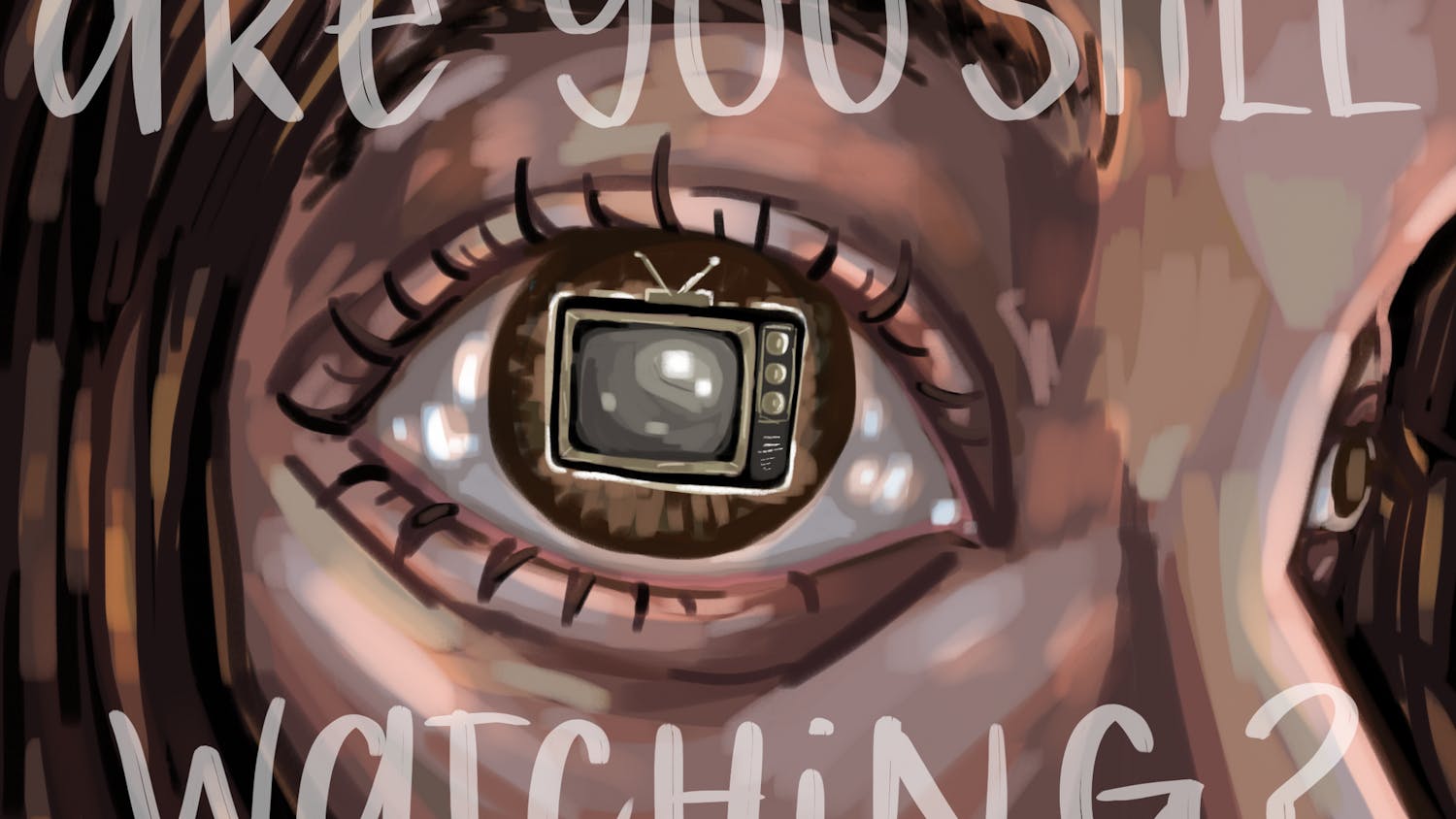At some point in the midst of last semester’s finals heyday, fifth-year architecture majors Andre Abrahamian and Sheyen Ikeda started to ask themselves if their studio projects, visually represented and described in architectural standards and building form conventions, could take on other meanings and interpretations. They had spent significant amounts of time staring at computer screens and condensing their concepts into three-dimensional, experiential forms and spaces in virtual and physical models — yet outside of models, these constructions could only take two-dimensional drawing and rendered forms. Even in photographs, spaces become flattened and performativity limited and up to the interpretation of the viewer. Seeing how their ideas could be so easily transformed with the click of mouse, the change of a color or deletion of a line, they began to experiment. The results of their exploration were on display last week as the exhibition Graphic Jam, housed in Hartell Gallery in Sibley Hall.
In collaboration with fellow architecture majors Benn Colker, Molly Chiang, and Travis Fitch, Abrahamian and Ikeda focused the exhibition on the phenomenon that is technology and its applications in the areas of artistic expression and exploration. For the exhibition, Abrahamian took his fall semester studio project and current thesis work and represented them in ways that were too abstract or art-like for a formal final architectural review. Experimenting with wire frame renderings, the addition of patterns and color blocks and other creative manipulations that are simply executed yet result in drastic visual changes, he created entirely new pieces of art in a matter of minutes. Without labels, explanations or definite people, furniture or ground planes to define and give a sense of scale, forms are left up to the interpretation of the viewer — what was once a wall could now take on entirely different properties, ones which could not be explicitly concluded as boundary, solid, vertical, load-bearing or even planar at all.
Some of Ikeda’s prints were photographs that were taken into design programs and manipulated to take on more graphic, rather than realistic, meanings. For instance, a photograph of children pointing guns at another child, or of dead bodies in a blood-stained alley, are exported and translated into graphic dimensions. Through commands like live trace (in which a computer converts pictures into mathematical functions), a face can be defined by elements such as color, highlight and texture rather than by realistic explanations such as nose, skin or hair. Because the computer program interprets the image in this way, selecting technologically defined elements and changing their properties results in a graphic translation, a world where blood can take on a grid pattern and a face can be broken down by humanly unrecognizable means.
This is not to say, however, that the advent of technology has resulted in an inverse reaction of lessened concepts, thoughtfulness or meaning. Throughout history, the introduction of technologies that create more efficiently and accurately has been critiqued for its ease of production and a supposed loss of meaning. This perhaps began in conjunction with the onset of Modernism and abstract, expressionist artists such as Piet Mondrian and Wassily Kandinsky. While it is true that the time to produce art has been drastically cut, it does not necessarily mean that the mental effort put into the meaning behind and construction of the actual work is any less thorough or intricate.
In terms of the Graphic Jam exhibition last week, technology was paraded as a means by which an infinite amount of beautiful images can be produced in a short amount of time. In Abrahamian’s words, the display was a representation of our “cut and paste culture,” a world that is too fast for us to think accurately and satisfactorily. “Information is coming at us from all angles at all times, we cannot always stop to think about it … sometimes we just have to produce.” And so the content of the exhibition became just that, a few moments in time for each of the artists in which they used their technological skills and creative eyes to produce something aesthetically pleasing.
Graphic Jam was on display in Hartell Gallery last week. Contact aa356@cornell.edu or egk7@cornell.edu for more information.
Ithaca Fine Arts Update: Archi-technology at Hartell Gallery
Read More










